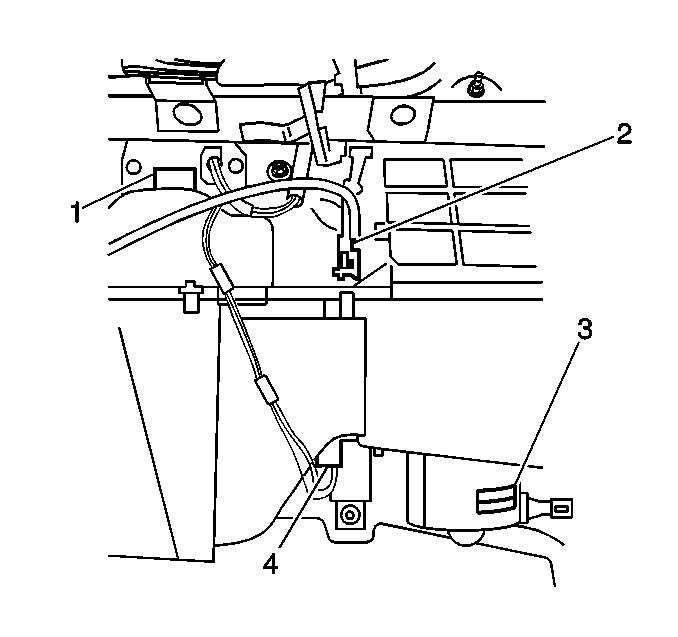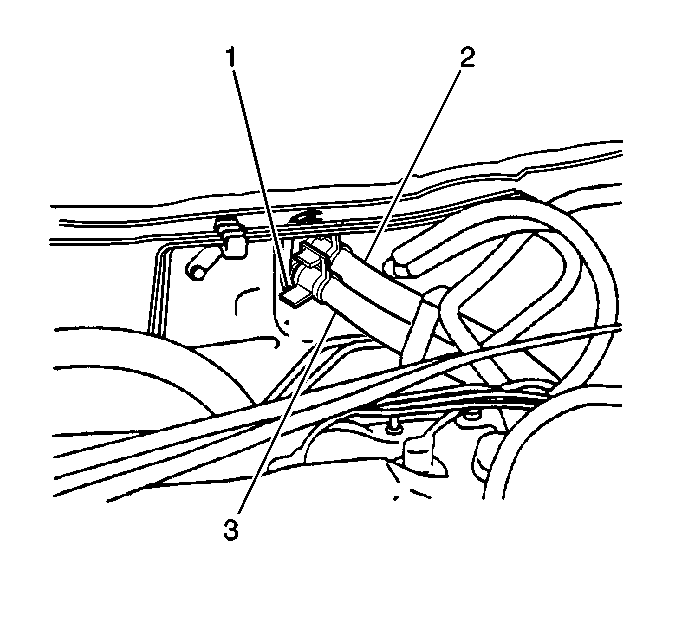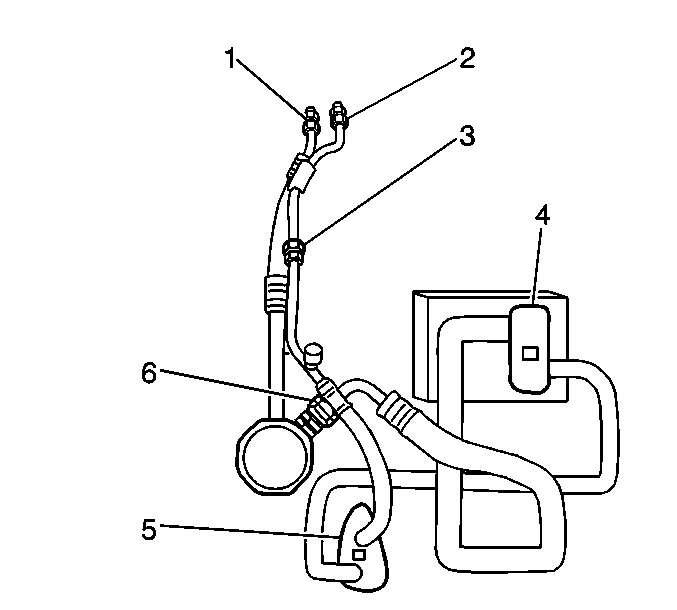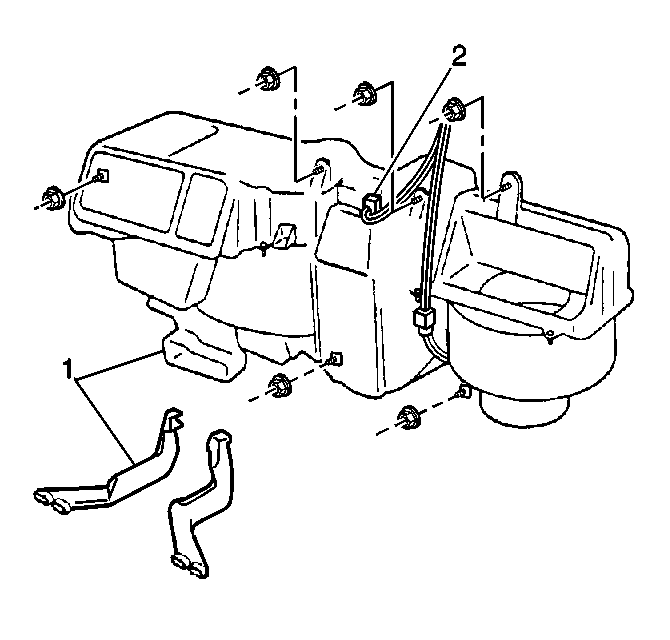Removal Procedure
- Disconnect the negative battery cable.
- Remove the instrument panel assembly. Refer to Instrument Panel Assembly Replacement .
- Remove the instrument panel reinforcement. Refer to Instrument Panel Carrier Support Replacement .
- Disconnect the blower motor electrical connector.
- Disconnect the blower motor resistor electrical connector (4).
- Disconnect the A/C compressor control module electrical connector (1).
- Drain the engine cooling system. Refer to Cooling System Draining and Filling in Engine Cooling.
- Remove the heater hoses (1,2) at the heater core.
- Discharge and recover the Refrigerant. Refer to Refrigerant Recovery and Recharging.
- Remove the cruise control servo (if equipped). Refer to Cruise Control Servo Replacement in Cruise Control.
- Remove the evaporator inlet (2) and outlet (1) tubes from the evaporator.
- Separate the rear heater ducts (1) from the HVAC module assembly.
- Remove the six nuts.
- Pull the HVAC module assembly forward and remove from the vehicle.
Caution: Unless directed otherwise, the ignition and start switch must be in the OFF or LOCK position, and all electrical loads must be OFF before servicing any electrical component. Disconnect the negative battery cable to prevent an electrical spark should a tool or equipment come in contact with an exposed electrical terminal. Failure to follow these precautions may result in personal injury and/or damage to the vehicle or its components.



Important: Cap the open fittings in order to prevent dirt and moisture from entering the refrigeration system.

Installation Procedure
- Install the HVAC module assembly to the vehicle.
- Install the six nuts.
- Connect the rear heater ducts (1) to the HVAC module assembly.
- Install new O-rings lubricated with mineral base 525 viscosity refrigerant oil.
- Install the evaporator inlet (2) and outlet (1) tubes to the evaporator.
- Connect the A/C compressor control module electrical connector (1).
- Connect the blower motor resistor electrical connector (4).
- Connect the blower motor electrical connector.
- Install the instrument panel reinforcement. Refer to Instrument Panel Carrier Support Replacement .
- Install the instrument panel assembly. Refer to Instrument Panel Assembly Replacement .
- Install the heater hoses (1,2) to the heater core.
- Fill the cooling system. Refer to Cooling System Draining and Filling .
- Evacuate and Recharge the A/C system. Refer to Refrigerant Recovery and Recharging.
- Install the cruise control servo (if removed). Refer to Cruise Control Servo Replacement in Cruise Control.
- Connect the negative battery cable.
- Operate the A/C system and test for refrigerant leaks. Refer to Leak Testing.

Notice: Use the correct fastener in the correct location. Replacement fasteners must be the correct part number for that application. Fasteners requiring replacement or fasteners requiring the use of thread locking compound or sealant are identified in the service procedure. Do not use paints, lubricants, or corrosion inhibitors on fasteners or fastener joint surfaces unless specified. These coatings affect fastener torque and joint clamping force and may damage the fastener. Use the correct tightening sequence and specifications when installing fasteners in order to avoid damage to parts and systems.
Tighten
Tighten the nuts to 10 N·m (89 lb in).

Tighten
| • | Tighten the inlet tube (2) to 25 N·m (19 lb ft). |
| • | Tighten the outlet hose (1) to 38 N·m (28 lb ft). |


Tighten
Tighten the negative battery cable to 15 N·m (11 lb ft).
